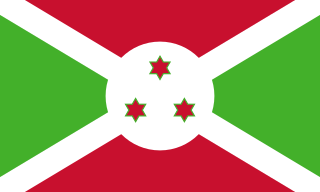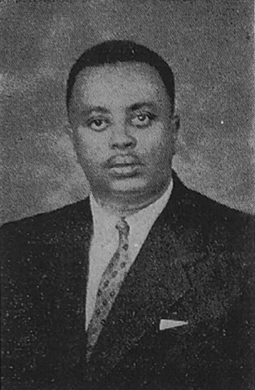
The karyenda is a traditional African drum. It was the main symbol of Burundi and its Mwami (King) and had semi-divine status. The Mwami was said to interpret the beatings of the karyenda into rules for the kingdom.

The karyenda is a traditional African drum. It was the main symbol of Burundi and its Mwami (King) and had semi-divine status. The Mwami was said to interpret the beatings of the karyenda into rules for the kingdom.



When Burundi gained independence from Belgium in 1962, the karyenda was the symbol on the national flag and its coat of arms from 1962 to 1966. [1] It was replaced after the republic was established. Traditionally the most important folk songs and dances were performed to extol the virtues of the kingship. A major festival was the annual umuganuro (sorghum festival), which was a huge display of pomp, festivities, and dances for the royal court. Since the fall of the monarchy in 1966, and particularly after a massacre of Hutus in 1972, such cultural expressions have waned.
The second most important drum was the rukinzo . It accompanied the mwami wherever he went.
The drums, despite many upheavals, have remained popular and are still revered. The old families who were wardens of the drums have tried to keep the ancient traditions alive. Some have an international outreach, such as the Royal Drummers of Burundi, or L. Ndoricimpa and C. Guillet, who recorded Les tambours du Burundi (The Drums of Burundi) in 1983.
As sacred objects, the drums were much more than simple musical instruments. They were used in rituals, such as the umuganuro, or for special circumstances. Major events for the king, such as royal coronations, funerals, and weddings were announced through the drums. The beating of the drums also signalled certain rites, such as when the mwami rose in the morning or retired in the evening.
Drums had various names, such as "dispenser of peace" or "lady of the land".
The Royal Order of Karyenda and the Royal Order of Rukinzo were founded by King Mwambutsa IV of Burundi on July 1, 1962. The Order of Karyanda was the principal order of the kingdom and was divided into five classes. [2] [3]
The drums were normally kept in drum sanctuaries. These were a tight network of high places, as well as centres of political and religious power in pre-colonial Burundi. The sanctuaries were guarded mainly by Hutu families, who were the only ones the king allowed to manufacture, play, and keep the drums or bring them to court for an occasion. They were called abatimbo , which is Rundi for drummers "who hit hard". A sacred drum was enthroned in each sanctuary and guarded by attendants. There were also ingendanyi (minor drums), and a set of drums that were played with the main drums.
Some of the main sanctuaries for the drums were: Gishora Hill, near Gitega; Higiro Hill, also near Gitega; Magamba Hill; and Banga.

Burundi originated in the 16th century as a small kingdom in the African Great Lakes region. After European contact, it was united with the Kingdom of Rwanda, becoming the colony of Ruanda-Urundi - first colonised by Germany and then by Belgium. The colony gained independence in 1962, and split once again into Rwanda and Burundi. It is one of the few countries in Africa to be a direct territorial continuation of a pre-colonial era African state.
Human occupation of Rwanda is thought to have begun shortly after the last ice age. By the 11th century, the inhabitants had organized into a number of kingdoms. In the 19th century, Mwami (king) Rwabugiri of the Kingdom of Rwanda conducted a decades-long process of military conquest and administrative consolidation that resulted in the kingdom coming to control most of what is now Rwanda. The colonial powers, Germany and Belgium, allied with the Rwandan court.

Louis Rwagasore was a Burundian prince and politician, who served as the second prime minister of Burundi for two weeks, from 28 September 1961 until his assassination on 13 October. Born to the Ganwa family of Burundian Mwami (king) Mwambutsa IV in Belgian-administered Ruanda-Urundi in 1932, Rwagasore was educated in Burundian Catholic schools before attending university in Belgium. After he returned to Burundi in the mid-1950s he founded a series of cooperatives to economically empower native Burundians and build up his base of political support. The Belgian administration took over the venture, and as a result of the affair his national profile increased and he became a leading figure of the anti-colonial movement.

Ntare V of Burundi was the last king of Burundi, reigning from July to November 1966. Until his accession, he was known as Crown Prince Charles Ndizeye.

The original national flag of Burundi was adopted after the country's independence from Belgium on 1 July 1962. It went through several revisions and now consists of a white saltire which divides the field into alternating red and green areas. The center of the saltire merges into a white disk, on which there are three red solid six-pointed stars outlined in green. The current ratio is 3:5, which was changed from 2:3 on 27 September 1982.

The coat of arms of Burundi, adopted in 1966, consists of a shield surrounded by three spears. On the shield is the motto of the nation, as well as the head of a lion. Behind the shield there are three crossed traditional African spears. Under the shield the national motto of Burundi appears on a scroll: Unité, Travail, Progrès.

Gitega, formerly Kitega, is the political capital of Burundi. Located in the centre of the country, in the Burundian central plateau roughly 62 kilometres (39 mi) east of Bujumbura, the largest city and former political capital, Gitega is also the second largest city and former royal capital of the Kingdom of Burundi until its abolition in 1966. In late December 2018, Burundian president Pierre Nkurunziza announced that he would follow on a 2007 promise to return Gitega its former political capital status, with Bujumbura remaining as economic capital and centre of commerce. A vote in the Parliament of Burundi made the change official on 16 January 2019, with all branches of government expected to move in over three years.

The Royal Drummers of Burundi, commonly known in recordings as The Drummers of Burundi or as The Master Drummers of Burundi, is a percussion ensemble originally from Burundi. Their performances are a part of ceremonies such as births, funerals, and coronations of mwami (Kings). Drums are sacred in Burundi, and represent the mwami, fertility and regeneration. The Royal Drummers use drums made from hollowed tree trunks covered with animal skins. In addition to the central drum, called Inkiranya, there are Amashako drums which provide a continuous beat, and Ibishikiso drums, which follow the rhythm established by the Inkiranya.

The Kingdom of Burundi, also known as Kingdom of Urundi, was a Bantu kingdom in the modern-day Republic of Burundi. The Ganwa monarchs ruled over both Hutus and Tutsis. Created in the 16th century, the kingdom was preserved under German and Belgian colonial rule in the late 19th and early 20th century and was an independent state between 1962 and 1966.

Gitega is one of the 18 provinces of Burundi. Its capital is Gitega, which is also the national capital. It has a population of 725,223 as of 2008 and an area of 1,979 square kilometres (764 sq mi).

The culture of Burundi is based on local tradition and common influence with its neighbors.
Ubuhake is the name given to the social order in Rwanda and Burundi from approximately the 15th century to 1958. It has been frequently compared to European feudalism. Based on cattle distribution, it was, however, a much smaller system than the one of uburetwa, which affected a much larger segment of the population and was based on land distribution. The Tutsi monarchy used the land distribution system of uburetwa to centralise control of the lands in most of Rwanda in a system called igikingi. Only the northwest of Rwanda, where Hutu land owners refused to submit, were not part of igikingi.

The Catholic Church in Burundi is part of the worldwide Catholic Church, under the spiritual leadership of the Pope in Rome.
Kiga people, or Abakiga, are a Bantu ethnic group native to south western Uganda and northern Rwanda.

The following outline is provided as an overview of and topical guide to Burundi:

Burundi, officially the Republic of Burundi, is a landlocked country in the Great Rift Valley at the junction between the African Great Lakes region and East Africa. It is bordered by Rwanda to the north, Tanzania to the east and southeast, and the Democratic Republic of the Congo to the west; Lake Tanganyika lies along its southwestern border. The capital cities are Gitega and Bujumbura, the latter being the country's largest city.
The field of Gishora is located approximately 7 km north of the city of Gitega, in the Gitega Province of Burundi. It houses a royal palace and royal field.

An attempted coup d'etat in Burundi took place between 18–19 October 1965, when a group of ethnic Hutu officers from the Burundian military and gendarmerie attempted to overthrow Burundi's government. The rebels were frustrated with Burundi's monarch, Mwami Mwambutsa IV, who had repeatedly attempted to cement his control over the government and bypassed parliamentary norms despite Hutu electoral gains. Although the prime minister was shot and wounded, the coup failed due to the intervention of a contingent of troops led by Captain Michel Micombero.

The Definitive Constitution of the Kingdom of Burundi, sometimes called the "independence constitution", was the constitution of the independent Kingdom of Burundi from its promulgation in 1962 until its suspension in 1966.

The Ritual dance of the royal drum is a drumming tradition from Burundi that combines synchronised drumming with dancing and traditional songs. In 2014, it was added to the Representative List of the Intangible Cultural Heritage of Humanity by UNESCO.
![]() Media related to Karyenda at Wikimedia Commons
Media related to Karyenda at Wikimedia Commons